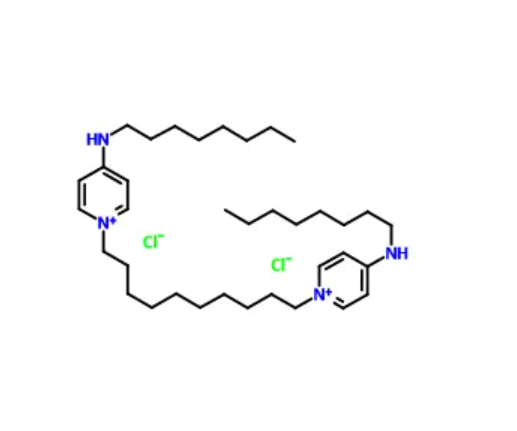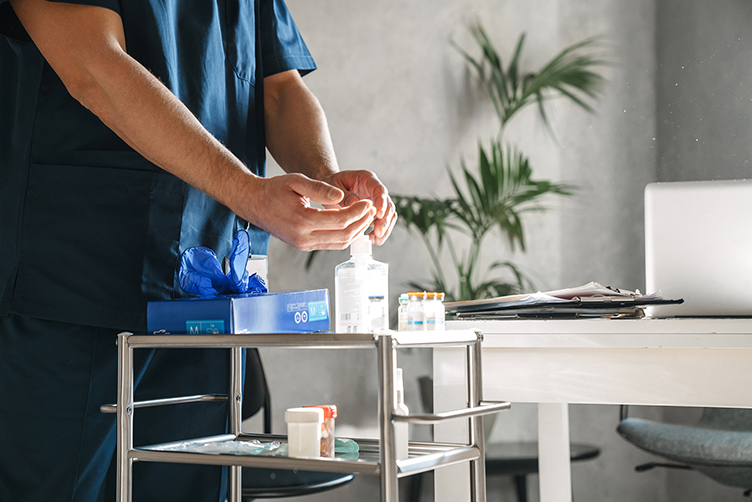Octenidine Dihydrochloride API: The Challenge for Lebsa in 2023
A couple of years ago, Lebsa challenged its R&D department to develop a new Active Pharmaceutical Ingredient: Octenidine molecule. Its development is based on various studies, notably, “Antimicrobial activity of Octenidine against multidrug-resistant Gram-negative pathogens” (Álvarez-Marín, R., et al., 2016) and “Standardised comparison of antiseptic efficacy of triclosan, PVP-iodine, octenidine dihydrochloride, polyhexanide, and chlorhexidine digluconate” (Koburger, T., et al., 2010). There are plans to have it ready for market entry by the end of 2023.
Effectiveness of Octenidine in preventing nosocomial infections
Octenidine is a chemical compound with antimicrobial properties that make it effective in combating a wide variety of bacteria, fungi, and viruses. This molecule is especially useful in disinfecting the skin and mucous membranes, and its effectiveness has been tested in different clinical studies, such as “An observational study of the universal use of octenidine to decrease nosocomial bloodstream infections and MDR organisms” (Oxford Academy Review, 2016).
Benefits of universal use of Octenidine Dihydrochloride as an antiseptic
This study evaluated the effect of universal use of Octenidine in reducing bloodstream nosocomial infections and multidrug-resistant MDR organisms in a hospital, drawing interesting conclusions about the molecule:
- The universal adoption of Octenidine Dihydrochloride as an antiseptic was associated with a significant decrease in the rate of bloodstream nosocomial infections.
- There was also a significant decrease in the rate of infections caused by MDR organisms, including methicillin-resistant S. aureus and vancomycin-resistant Enterococcus faecium.
- Universal use of Octenidine was not associated with any significant adverse side effects.
- Adopting Octenidine as an antiseptic was an effective and cost-effective measure to prevent nosocomial infections and reduce antibiotic resistance.
In summary, the study suggests that the universal use of Octenidine as an antiseptic may be an effective and safe strategy for preventing nosocomial infections and reducing the spread of multidrug-resistant organisms.

Advantages of Octenidine compared to other disinfectants
Unlike other compounds used in disinfectants, such as triclosan, povidone iodine, chlorhexidine, or polyhexanide, Octenidine has some interesting advantages:
- Broad spectrum of action, in addition to rapid action: ideal for use in emergency situations or when rapid disinfection is required.
- Long-lasting residual effect: can protect the skin for a prolonged period after application, making it especially useful in hospital environments and other places where the presence of resistant bacteria is common.
- Low toxicity and non-irritating to the skin: ideal for use in people with sensitive skin or for disinfecting areas of the body that are particularly sensitive, such as the eyes or ears.
Multiple uses of Octenidine Dihydrochloride
Studies such as “Octenidine Dihydrochloride, a Modern Antiseptic for Skin, Mucous Membranes and Wounds” (Schneider, G., Kramer, A., & Obst, U – 2010) describe how the diverse properties of Octenidine Dihydrochloride render it a highly practical molecule with many uses. The main conclusions of the article could be summarised as follows:
- It is a broad-spectrum antiseptic that has been shown to be effective against bacteria, fungi, and viruses.
- It has anti-inflammatory and analgesic properties, making it useful in the treatment of wounds and burns.
- Its low toxicity and low potential for irritation make it a safe molecule for use on the skin and mucous membranes.
- Octenidine has been successfully used to prevent and treat infections in a variety of clinical settings, such as surgery, dentistry, obstetrics, and dermatology.
- It has also been used to prevent catheter colonisation and reduce the incidence of catheter-related infections.

Interest and market demand for Octenidine
When combined with the results presented in “Evaluation of Antibacterial Efficacy of 0.1% Octenidine Hydrochloride and 2% Chlorhexidine Gluconate Against Enterococcus Faecalis – An In Vitro Study” (Gupta, V., Jaiswal, P., & Tiwari, S. K. – 2014), which demonstrate that a lower concentration of Octenidine (0.1%) equals the antibacterial efficacy of higher concentrations of chlorhexidine gluconate (2%) against pathogens such as E. faecalis, it is clear why there is an interest and market demand for the implementation of Octenidine. Especially considering that, according to IQVIA estimates, the market for Octenidine will grow by up to 143% between 2021 and 2031 (total market in euros of Octenidine alone and in combination with other molecules).
This exponential growth is perfectly understandable when considering the numerous applications of Octenidine in the clinical and hospital environment: in the pharmaceutical sector, Octenidine would fulfill the purpose of treating genital infections, acne, skin and mucous membrane antisepsis, nasal disinfection, and wound treatment, among others; in the cosmetic sector, Octenidine is a valuable preservative for cosmetics, as well as a valuable ingredient for products related to oral and skin cleansing and disinfection; in the veterinary field, Octenidine is a valuable aid in wound disinfection.
Final Words
Lebsa, along with its dedicated R&D team, is working diligently to develop the Octenidine molecule, with the mission of enabling its use in the medical industry and other environments where disinfection is essential. We eagerly anticipate its launch in late 2023, with confidence and the belief that it will become a valuable tool in maintaining global health standards.



